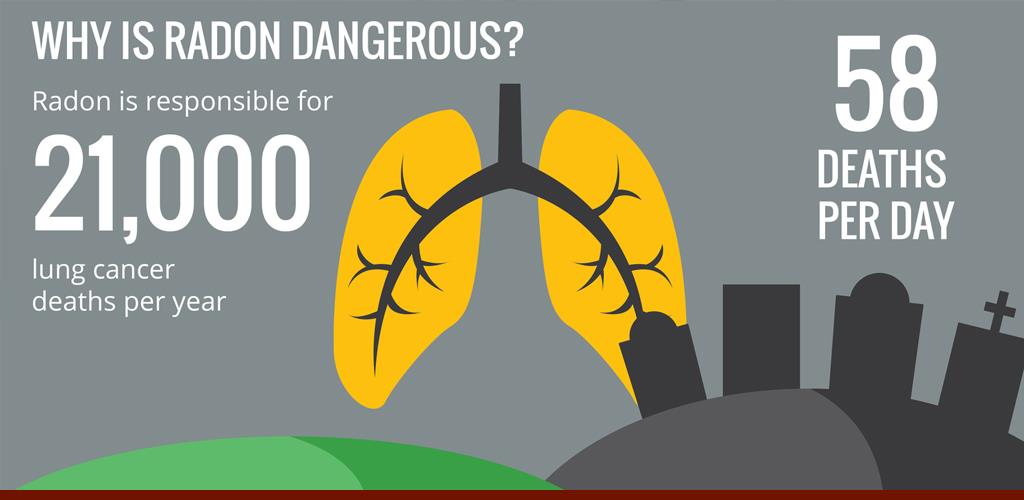Maybe it’s what I do for a living or maybe it’s heightened awareness, but I’m hearing a lot more about Radon Gas these days. In fact, in April, when I read this article in Avenue Magazine, I decided it was time I knew more!
Did you know that your risk of developing lung cancer is 1 in 20 if you are a smoker? If you’re a smoker AND you are exposed to high levels of radon, that goes to 1 in 3. It’s also the leading cause of lung cancer among non-smokers. Yep, that’s pretty alarming.
That stat is from the Radon Reduction Guide for Canadians put out by Health Canada. The resource is definitely worth a read and gives you DIY steps if you want to try and test on your own.
According to Health Canada, every home in Canada should test for radon. As mentioned, you can even do it yourself. Click either of the Health Canada links above and get more information about testing and where to buy kits.
Personally, I’m not a home inspector, nor do I have a science degree. I went the professional testing route and used my friend Steve Fletcher at Blue Seal Property Inspections. Steve is a certified through Canadian National Radon Proficiency Program (C-NRPP). Health Canada says to ensure you’re using someone that’s certified so talk to Steve!
Maybe I should back up. Radon is the radioactive gas formed by the breakdown of uranium. Uranium is a natural radioactive material found in all soil and rock. Now do you see why it can be a health risk?
The first thing to know is that just because your neighbours have positive or negative radon tests, doesn’t mean you will. It’s all about how it’s getting into your home, in what quantities and how that air is circulated and removed from the home.
Typically it gets in through cracks and weaknesses in basement foundations. When it enters these enclosed spaces it can accumulate at high levels, and that’s when it becomes a health risk.
While short-term testing is not recommended as being completely effective, it can give you an idea of whether you and your family are at risk or not. If levels on short-term tests are high, or verging on high, then you can opt for long-term testing.
Short-term testing is easier fall to spring, when windows can remain closed – ie. you are able to maintain closed conditions. The more airflow in the home, the less accurate the test. It can be inconvenient to keep windows shut, fans off for the period of test, hence it’s recommended not to do in summer. Because testing it taking averages, long-term testing will give you more accurate results, but takes four times as long. Levels naturally vary, so longer term averages will take into account seasonal variability.
Our plan had been to start with a short-term test and, if the results warranted it, move to long-term testing. Luckily for us, our levels were less than half of the Canadian Guideline of 200 Becquerels per metre cubed (Bq/m3). This is the minimum level at which they recommend you fix your home to reduce radon levels.
The University of Calgary is completing a study that aims to gather data for medical research on the prevalence of carcinogenic gas in Alberta homes. For now, they have this fact sheet which may prove good reading for those interested. According to Global News, they had tested 2,300 Calgary homes by November last year, and you can see some of the results in this cool map of Calgary (click on the map to enlarge the image and see results).
So for your health, and the health of your family, shouldn’t you test?
And for more information on engaging a professional for testing, reach out to Steve at Blue Seal Property Inspections.



Leave A Comment